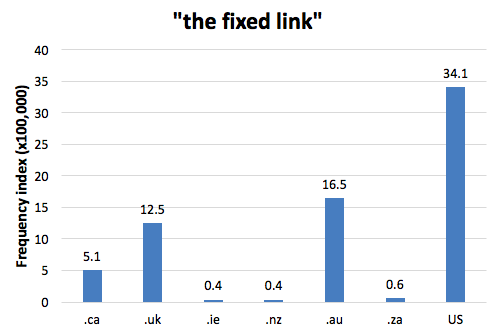DCHP-2
fixed link fixed-link, Fixed Link DCHP-2 (November 2016)
Non-Canadianism
n. — Transportation
a permanent transit route supporting road or rail traffic; a bridge, tunnel or combination of the two.
The term fixed link describes a permanent transit route, such as a bridge or a tunnel (see the 1980 quotation), that connects two bodies of land separated by water. The term emerges when it is not decided whether a bridge or tunnel is the best transit solution. The OED-3 defines the term with specific geographical reference to the "means of transit between Great Britain and France" (see OED-3, s.v. "fixed link"), with the earliest attestation from a 1974 British source. The earliest found attestation of the term in Canada is with reference to a projected fixed link between the Vancouver mainland and Vancouver Island (see the 1980 quotation). In addition, it has been used to describe proposed connections to Newfoundland and to Prince Edward Island from the mainland. The Confederation Bridge (see ITP Nelson, s.v. "fixed link") that connects New Brunswick and Prince Edward Island (see the 1995 and 2002 quotations) was referred to as the fixed link until its opening in 1997, when it was named the Confederation Bridge. It spans 13 kilometres over the Northumberland Strait (see Canadian Encyclopedia, s.v. "PEI's Fixed Link").
Neither does the term originate in Canada, nor is it of any considerable frequency (see Chart 1) or cultural salience.
See also COD-2, s.v. "fixed link", which is marked "Cdn. & Brit.".- First used in connection with discussion around a Channel fixed link between France and Britain, the term has acquired an international dimension (see Chart 1). The earliest quotations are from 1961, from UK and US sources (compare OED-3. s.v. "fixed, adj.", fixed link, with attestations from 1974) (15 Jul. 2016).
References:
- COD-2
- Canadian Encyclopedia s.v. "PEI's Fixed Link Opens" Accessed 2 Jun. 2016
- ITP Nelson
- OED-3
Images:

Chart 1: Internet Domain Search, 26 May 2014